 |
 |
 |
| |
Pre-Exposure Prophylaxis product choice of participants in HPTN 083
|
| |
| |
AIDS 2024 July 20-26 Munich
M.E. Clement1, Z. Wang2, C.J. Fichtenbaum3, S. Thomas4, J.A. Bazan5, P. Richardson6, M.A. Spinelli7, B. Hanscom2, A.R. Rinehart8, J.F. Rooney9, A. Adeyeye10, M. McCauley11, A. Jennings12, K. Gomez12, M. Cohen13, B. Grinsztejn14, R.J. Landovitz15, HPTN 083 Study Team
Institutions
1Louisiana State University Health Sciences Center- New Orleans, Infectious Diseases, New Orleans, United States, 2Fred Hutchinson Cancer Research Center, Seattle, United States, 3University of Cincinnati, Division of Infectious Diseases, Cincinnati, United States, 4University of California Los Angeles, UCLA Vine Street Clinic, Los Angeles, United States, 5Ohio State University, Columbus, United States, 6Johns Hopkins University School of Medicine, Department of Pathology, Baltimore, United States, 7University of California San Francisco, San Francisco, United States, 8ViiV Healthcare, Research Triangle Park, United States, 9Gilead Sciences, Inc., Foster City, United States, 10U.S Centers for Disease Control and Prevention, Atlanta, United States, 11FHI 360, Washington DC, United States, 12FHI 360, Durham, United States, 13University of North Carolina Chapel Hill, Infectious Diseases, Chapel Hill, United States, 14Instituto Nacional de Infectologia Evandro Chagas-Fiocruz, Rio de Janeiro, Brazil, 15University of California Los Angeles, Los Angeles, United States
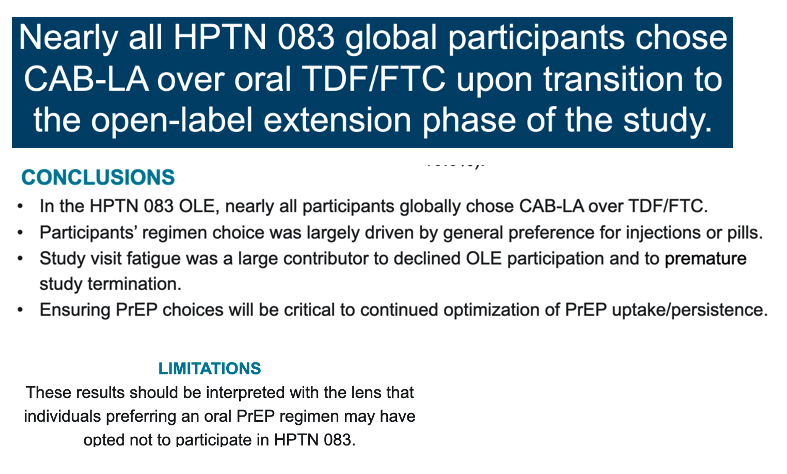
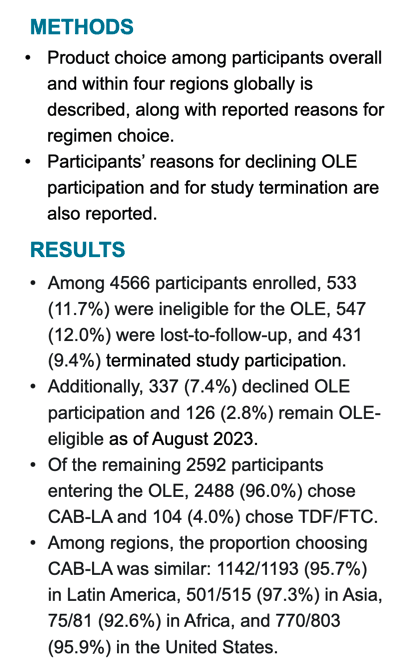
BACKGROUND: The HPTN 083 study demonstrated superiority of long-acting injectable cabotegravir (CAB-LA) compared to daily oral tenofovir disoproxil fumarate-emtricitabine (TDF/FTC) for HIV pre-exposure prophylaxis (PrEP) in cisgender men and transgender women who have sex with men. In the study’s open-label extension (OLE), participants were offered choice of CAB-LA or to complete study participation with TDF/FTC. We report on OLE product choice for all participants by region to investigate presence of any regional or cultural differences in product preference.
METHODS: We provide a breakdown of product choice among participants overall and within four regions globally and describe participants’ reported reasons for regimen choice. Participants’ reasons for declining OLE participation and for study termination are also reported.
RESULTS: Among 4566 participants enrolled, 533 (11.7%) were ineligible for the OLE, 547 (12.0%) were lost-to-follow-up, and 431 (9.4%) were terminated. Additionally, 337 (7.4%) declined participation in the OLE and 126 (2.8%) remain OLE-eligible. Of the remaining 2592 participants entering the OLE, 2488 (96.0%) chose CAB-LA and 104 (4.0%) chose TDF/FTC. Among regions, the proportion choosing CAB-LA was similar: 1142/1193 (95.7%) in Latin America, 501/515 (97.3%) in Asia, 75/81 (92.6%) in Africa, and 770/803 (95.9%) in the United States. Reported reasons for product choice are listed in the Table. The most common reason for terminating prior to the OLE or declining participation in the OLE was lack of continued study interest (186/431 [43.2%] and 168/337 [49.9%], respectively).
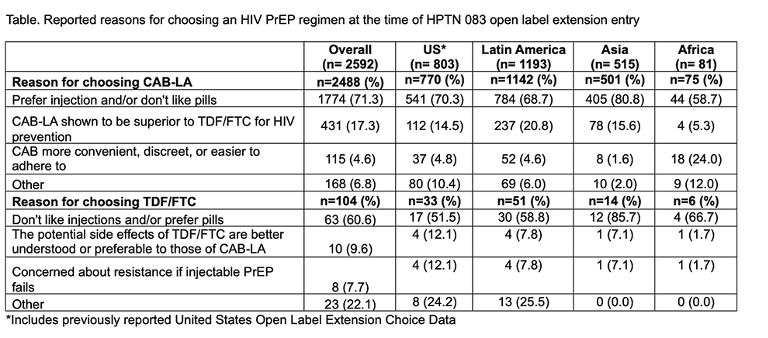
CONCLUSIONS: In the OLE phase of HPTN 083, nearly all participants globally chose CAB-LA over TDF/FTC. Participants’ choice of regimen was largely driven by a general preference for injections or pills. Study visit fatigue was a large contributor to declined OLE participation and to study termination. These results should be interpreted with the lens that individuals preferring an oral PrEP regimen may have opted not to participate in HPTN 083.
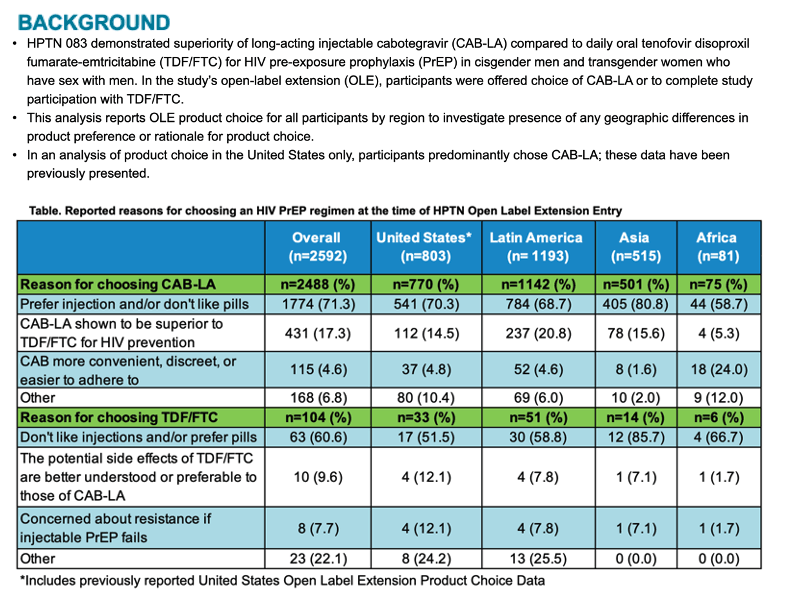
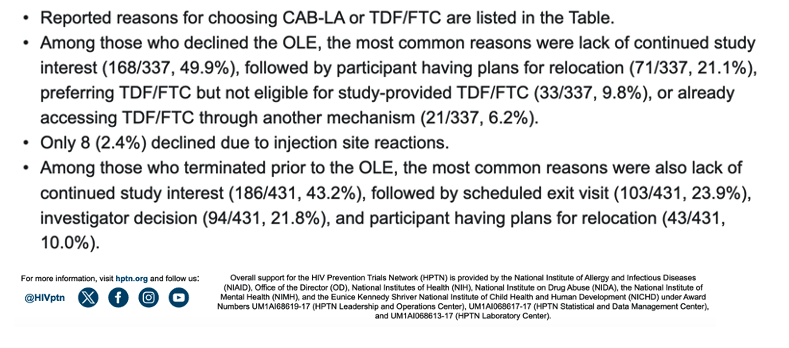
|
| |
|
 |
 |
|
|